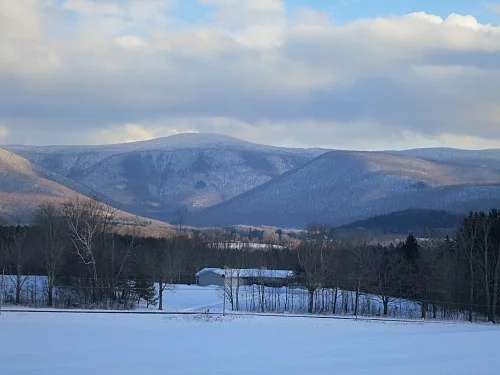Mt. Greylock.
‘‘From the desk at which he wrote Moby-Dick {in the 1850s}… Herman Melville could gaze upon … western Massachusetts' Berkshire Mountains. In the summer of 1850, at age 31, the writer had moved from New York City, … to the outskirts of Pittsfield, then still a village, where he settled into a modest, mustard-yellow farmhouse called Arrowhead—for the Native American artifacts once unearthed on the property. After years of sailing the world aboard New England whaling vessels, Melville was trying his hand at farming. … But in winter, the landscape turned his thoughts back toward the mariner's life.’’
”From Melville's cramped, book-lined study, visitors today take in a clear view of Mt. Greylock. For Melville, the brooding mass of wintry Greylock called to mind, or so biographer Andrew Delbanco has speculated, a great leviathan, emerging from a roiling, white-capped ocean. Although Melville's few surviving letters make no mention of this, his neighbor and fellow novelist, Nathaniel Hawthorne, once wrote that Melville spent his days ‘shaping out the gigantic conception of his white whale’ while staring at the snow-covered mountain. In his novel, Melville would describe Moby-Dick as a ‘grand hooded phantom, like a snow hill in the air."‘
— From Jonathan Kandell’s article “The Berkshires,’’ in the May 2007 Smithsonian Magazine.











